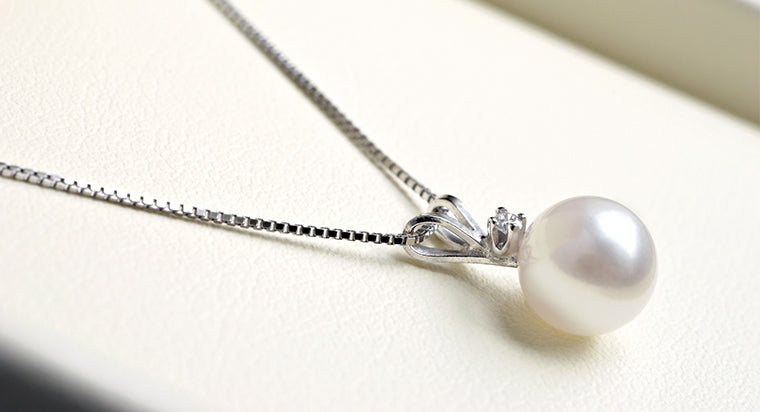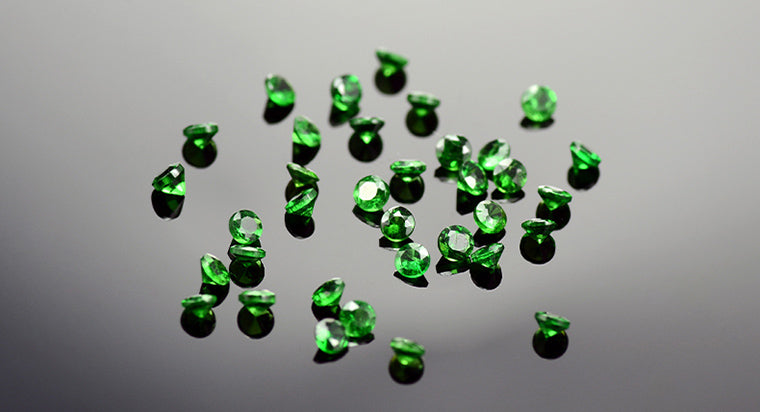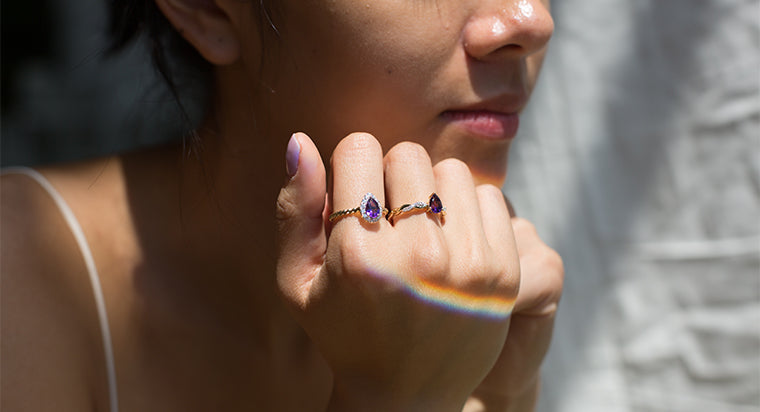Natural Emerald Grading

Emeralds are most commonly graded on four factors: color, clarity, cut, and carat weight. Emerald color is by far the biggest factor that establishes the value and quality of natural emeralds.
TABLE OF CONTENTS
Emerald Color and Emerald Color Chart
In natural emeralds, color is evaluated by three categories: hue, tonal grade, and saturation. Tonal grade establishes the degree of darkness or lightness of green that is found in the gem. Natural emeralds have a wide variety of green tones, including Very Light, Light, Medium Light, Medium and Medium. You can see the difference in actual natural stones below in our emerald color chart.
Generally speaking, a high-quality emerald will have a tone in the Medium to Very Dark range. But emeralds can fall into any of those categories. The tonal grade alone doesn't determine the true quality of an emerald. Hue and saturation also have to be considered.
Hue refers to the type of green color an emerald has. For example, a natural emerald could be referred to as “bluish-green” or “yellowish-green.” Most emeralds on the market today are Colombian, and Colombian emeralds present a “bluish-green” color.
Saturation is what gives the color of an emerald its intensity and strength. Emerald saturation can range from very dull green to pure and vivid. For example, “Medium Dark” stones are generally considered high quality. However, if the stone has a dull saturation, the overall quality of it is lowered. On the other hand, if a “Medium Light” stone sparkles with vivid saturation, it will be more appealing. That's why emeralds are graded by all three categories.
Emerald Grading Scale
Emeralds are gemstones. Therefore, they can be graded by the preferred grading system for all gemstones: Natural AAA, AA, or A.
- Natural AAA: This is the highest quality. It represents are the top 10% of gemstones. Natural AAA emeralds are rich green, moderately to slightly included, and they exhibit very high brilliance.
- Natural AA: This is the second-best category for gemstones. Natural AA gemstones account for 20-30% of all gemstones. Emeralds in this category are medium green and may include moderate inclusions.
- Natural A: This category accounts for 50 to 75% of all gemstones. Natural A emeralds are dark green, heavily included, and opaque. They are still good, but they are considered to be of a lower quality compared to the two categories above.
Apart from Natural AAA, AA, and A, there's also a category called Heirloom/Rare Emerald. This is the highest quality, even better than AAA. They are extremely rare and expensive.
Emerald Clarity
Emerald clarity refers to what the gemstone looks like on the inside. The clarity of emeralds makes them different from any other gemstone. Most emeralds have inclusions which include small bits of gasses, other minerals and crystals, and liquids that the emeralds take on during the crystallization process. It's normal for emeralds to have inclusions — in fact, around 99% of all natural emeralds will include them. The Gemological Institute of America (GIA) created three categories of clarity types for colored gemstones. They include Type 1, Type 2, and Type 3 gemstones. Emeralds naturally fall into the Type 3 gemstone category.
- Type 1 gemstones: These are typically inclusion free, or almost inclusion free
- Type 2 gemstones: These gemstones are usually included.
- Type 3 gemstones: These are almost always included.

Inclusions in Emeralds
Inclusions are normal in emeralds, but if there are too many, the gemstone will start to look less like a crystal. Too many inclusions can also compromise how durable a stone is, and they can lower the value if they're too close to the surface. Low-clarity emeralds will have too many inclusions, especially ones close to the surface. However, it's important to understand that inclusions are a natural part of emeralds, and you should always expect to find them. Inclusions in emeralds are special, and if an emerald doesn't have any inclusions it could be synthetic, or an imitation.
Emerald Treatments
Since emeralds are naturally included, it has become standard practice to treat the stones with oils or resins to enhance their clarity. Cedar oil is most commonly used to improve emeralds' clarity, therefore improving its overall quality and grade.
FAQs
How are emeralds graded?
What are the different grades for emeralds?
How to grade an emerald?









